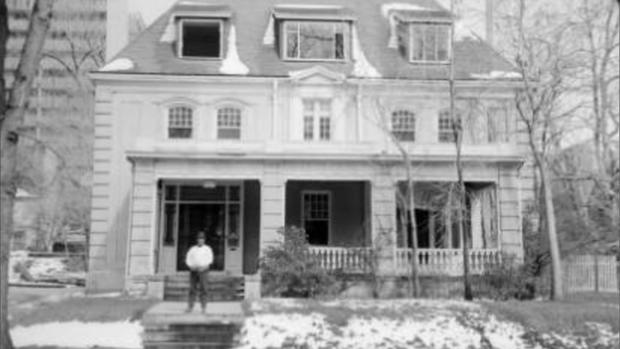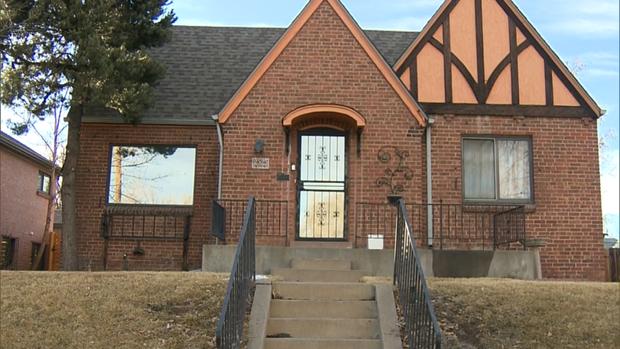Legacy Of Redlining Led To Today's Black And Latino Families Being Pushed Out Of Denver
(CBS4) - James Roy II just opened his art gallery Urbanity Gallery in Denver, his hometown.
"I grew up in the Five Points originally, and then in Park Hill for middle school and Aurora for high school," he said.
He's also the Executive Director of Denver Metro Community Impact and a Master's student at CU Denver. He's writing his Master's thesis on Urban Planning and Displacement. Like anyone who has lived in the Denver metro area for the last couple decades he has seen Denver grow and change. He says a big reason for the for that is gentrification.
His professor, Carrie Makarewicz says, "Gentrification is a process of reinvestment in an area where the incumbent residents often eventually get displaced."
Think about the Highlands, which was once called North Denver and was predominately a Latino and Italian community. Or RiNo, the warehouse district that is now a trendy food and retail area. Then there is Five Points and North East Park Hill, James' neighborhood, which looked a lot different when he was a kid.
"The neighborhood was 70% black in the year 2000. It went down to about 53% in 2010, and now it's predicted to be below 40%," he said.
This pushing out of Denver's Black and Latino communities isn't just happening in a bubble. Discrimination was the spark that started the fire.
"Redlining has been such an integral piece of all of that," said owner and CEO of The Dixon Group, Daniel Dixon.
Redlining was a tool used in the 30s and 40s by loan companies to make sure they were making sound investments.
"It was this process of establishing underwriting standards to ensure that money that went into backing mortgages was going to be able to be recouped and it was safe," Makarewicz said.
Lenders would take a map of a city, like Denver, and color code neighborhoods. Blue or green was an area of good investment, yellow was considered a declining area, and red areas were risky investments. There were many factors that influenced the decision to give a neighborhood a "red" designation, but one of the big ones was who lived there.
"It reflected at the time racial beliefs," said Makarewicz.
For example, what is today Denver's Five Points neighborhood was a red-lined area and described as, "An old area now occupied by a combination of negroes, Mexicans and a transient class of workers." Carrie Makarewicz says, "It reinforced segregation, inequality, and racist belief about who should be able to get a loan invest in a neighborhood and get ahead."
That means that Black people often couldn't be homeowners, and instead rented. Daniel Dixon has been a realtor for 11 years and says that legacy has hurt Black and Latino families.
"If these minorities had been given the opportunity to purchase these homes and not be discriminated against and own this real estate, and own this land, and own these buildings in these areas then when these developers are coming in wanting to completely gentrify and completely build it up, then they would have made a profit but instead there are a lot of renters that are being pushed out of their area," Dixon said.
In his line of work, he too has seen Black families being pushed out of metro Denver.
"They're going to Mead, they're going to Brighton, they're going to these areas that are not centrally located in and around the Denver metro area."
He says that thanks to discriminatory practices like redlining, Black customers often don't have financial help to make competitive offers on homes the way that many white buyers or investors do because their parents and grandparents were denied the opportunity to be homeowners and thus build generational wealth.
"It's about 'Hey, well my mom wasn't part of that inheritance where she can gift me my downpayment for my 20% down on my house," Dixon said.
That means that Denver is becoming whiter and losing its cultural heritage. Roy thinks that is a bad thing.
"The loss of culture and diversity is always a detriment to a city," he said.
So where do we as a community go from here? How can we keep people of color in the city while continuing to grow and improve areas that were once blighted and neglected? Roy and Dixon both say that in order to bring people back, and keep their future generations in the city, we need to level the playing field for people of color looking to buy a home.
"Some of the most wealthiest people in the United States built their wealth through real estate," said Dixon.
A good start is by helping people of color compete for homes in the red hot Denver market by granting them downpayment assistance.
"We need to be able to create opportunities for renters to get into homeownership and to take advantage of that economic benefit," said Roy.
Dixon says home ownership will not only bring people back or keep them in Denver, but it will also lift their families up for generations to come.
"Being able to get a home is incredibly important for the future generations and creating that general wealth for your family," he said.
Another solution is convincing people who do own homes in traditionally Black or Latino areas that there is value to keeping their home and not selling to investors for a quick payday.
"Folks are coming into the community and taking advantage lack of understanding of how much they actually hold within their families," said Roy. "Folks have really sold their community wealth in a way."








